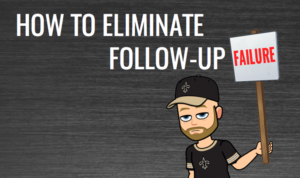4 Minute Read...
Welcome to the Best Management Practices for Digital Projects Series. It’s no secret that running digital projects comes with a unique set of problems. Communication can be difficult, aligning expectation levels, the list goes on. After working on thousands of projects I’ve hit my fair share of bumps in the road, I’ve also learned how to avoid them. Thus, this series was born!
I’m bringing you two more of my best management practices so you can start improving your digital project processes. If you haven’t already, be sure to get the first two BMPs.
3. Documented Sign-Offs
Every project you do is broken up into phases, or sprints, or whatever you call it! The important part is that at the conclusion of each phase, you must send over a sign off document for the client. The client needs to read, approve, and sign it before you proceed with the next steps. Having a formal and binding sign-off process shows the client that this isn’t something to be taken lightly. It’s not just approving copy, it's setting the stage for the rest of the project.
The clients who don’t take the transition from one phase to the next seriously are typically the ones who want to come back and revisit the copy phase right before you go live. Or decide after the website is up that they want a different color scheme, or a new button, or logo, or anything. Enter: scope creep.
To avoid this you must have a documented sign-off before proceeding to the next phase. Having this in place will protect your agency. Now, when a client wants to come back and make changes to a particular phase, they'll know that work will incur additional charges. Following this practice will free up time and save you money. There will be less backtracking and do-overs, and more progress.
(RELATED: For more great tips on how to eliminate scope creep check out this article.)
4. No Fluff
If you get a text after hours or a Skype message during the day make sure the client knows that it’s informal. If it does not go through the project management portal it does not count. The reason being, these are the outlets where you tend to get into fluff talk with the clients. Fluff talk is all of the dreams, what-ifs, and hypotheticals in a project. The problem with these conversations is that clients don’t understand the difference in the meaning “Yeah I can do that.” When you say this you probably mean you’re physically capable of custom coding a page, but that doesn’t mean it's in the original agreed upon scope. But in the client's eyes you just agreed to custom code an entire page for them.
This is especially important for all of you serial entrepreneurs out there who love to talk about what you could do. You cannot fluff talk and you need to make sure your project managers don't either. Always focus on the project at hand and what’s already be agreed upon. If a client wants to talk about additional items that's fine but you’ll need to take them out of the project phase and bring them into a formal sales meeting. At that point you can up sell them on additional features and get more money in the bank. But brainstorming about big ideas and possibilities in a casual conversation is a big no-no.
Always focus on the project at hand and what’s already be agreed upon. If a client wants to talk about additional items that's fine but you’ll need to take them out of the project phase and bring them into a formal sales meeting.
If a client tries to engage in fluff talk and you feel tempted just remember, both of you legally agreed that you were going to deliver a project for a certain amount of money within a certain time frame. If you want to stick to that agreement you have to stick to the original scope and plan. Fluffy conversations will confuse clients, and they won't know what's actually included and what's not. So make sure you’re always sticking to the pragmatic and factual side. If you’re having a formal conversation it goes through the project management platform.
There you have it, two more best management practices for digital projects. Adhering to these practices will help you create happier clients and eliminate scope creep. Make sure you check out the other best management practices:
Best Management Practices for Digital Projects 1 & 2
Best Management Practices for Digital Projects 5 & 6
Best Management Practices for Digital Projects 7 & 8
(NOTE: If you're ready to streamline your project lifecycles and increase your service bandwidth check out our Project Management Online Course.)



![[PODCAST] – Mike Zeller – Twice Born – How a Crisis Can Remake You and Going From Entrepreneur to CEO](https://marketingagencycoach.com/wp-content/uploads/2020/08/Mike-Zeller-Thumbnail-300x224.png)
